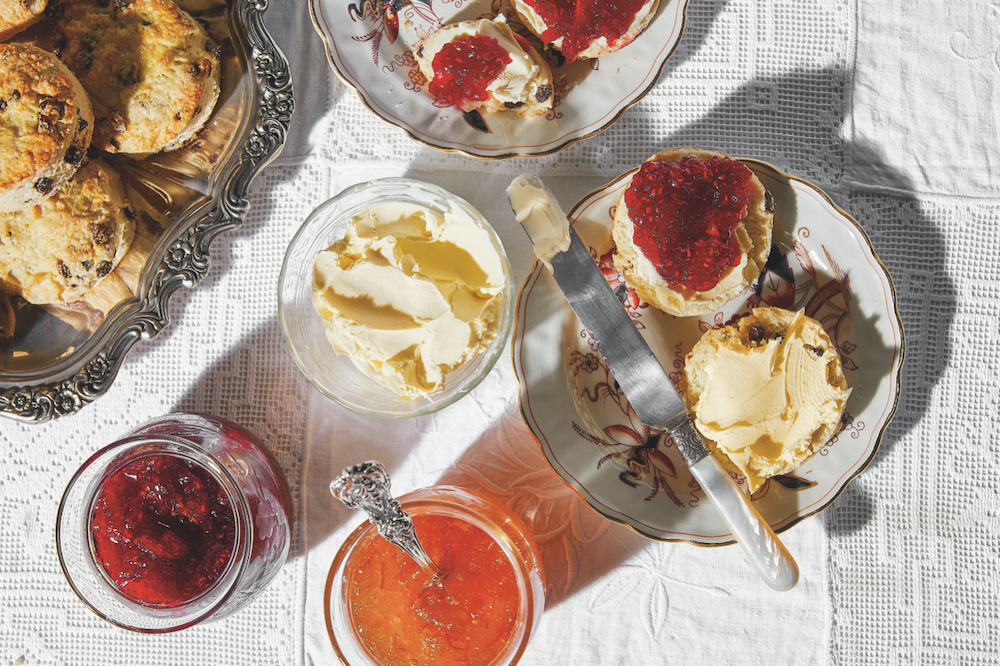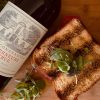Attention Fans of Downton Abbey – It’s Afternoon Tea Week this month (10-16 August in case you wondered) and I thought it appropriate to share some recipes with you from a delightful new cookbook that will be the perfect gift for any fans of Downton Abbey and of baking. The Official Downton Abbey Afternoon Tea Book is an excellent value hardback (£12.99) published last month by Frances Lincoln. It has a foreword by Gareth Neame, the executive producer and it shows how afternoon tea is a revered and treasured English tradition. Fans of the TV series and film can delve into a range of sweet and savoury English classics such as Battenburg Cake and Bakewell Tart and enjoy recipes that capture the delicacies of the time – and the proper way to serve them.
The book features a detailed narrative history and extols the proper decorum for our afternoon tea. Lovely food photographs, character quotes, and stills from the television series and recent film, bring the characters of Downton Abbey, and this rich tradition, to life.
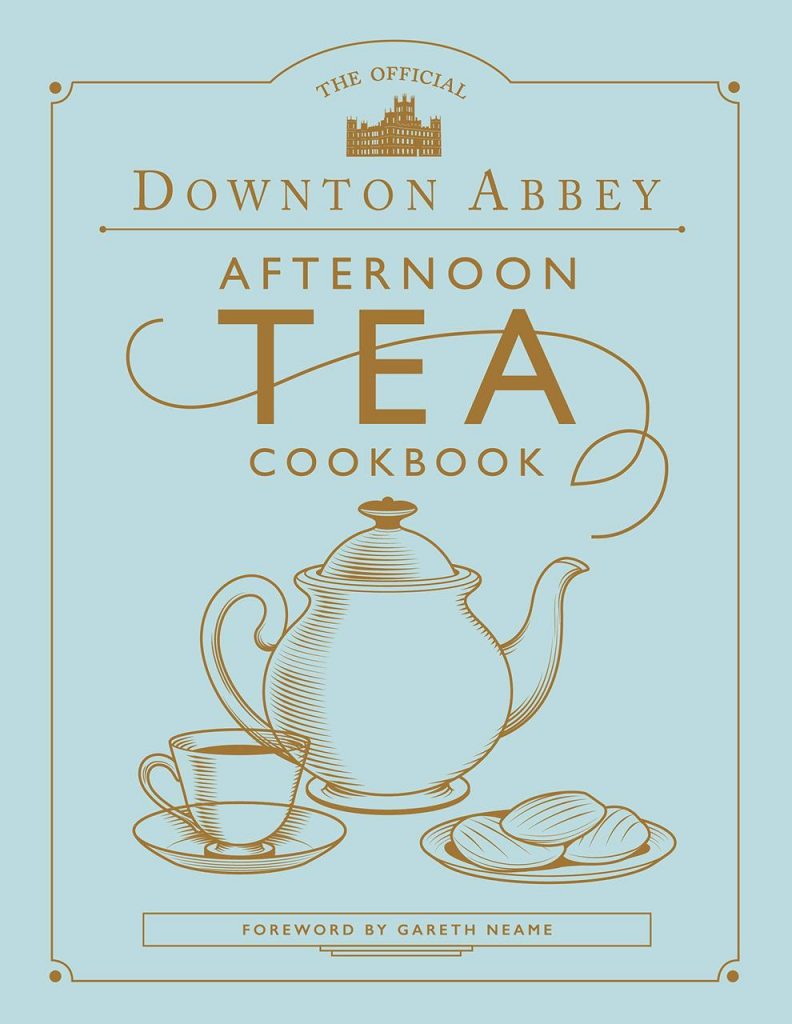
I’ve chosen a couple of recipes from the book for you to try. I have to confess that baking isn’t really my thing – I’m too lazy and don’t like the attention to detail needed with quantities and timings, so tend to rely on delivery from Frankonia when we want lovely cakes and baked goods, but I can make a mean cucumber sandwich! Anyway, do try these recipes that are favourites of mine and I would urge you to have a look at the book – it is much more than a cookbook.
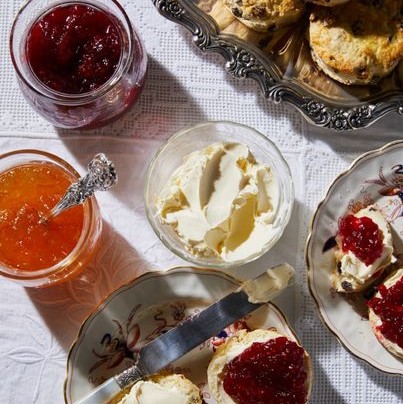
Classic Cream Scones
Scones have been essential to the tea-time tradition since the mid-nineteenth century when, according to legend, the fashionable Duchess of Bedford ordered her servants to sneak the small cakes and hot tea into her room for an afternoon snack. In time, she began inviting her friends to join her for afternoon tea, and this homey ritual became a social trend. Queen Victoria, hearing of the new convention, soon began hosting fancy-dress tea parties. The tradition continued into the twentieth century, with Mrs Patmore serving scones to Lord and Lady Grantham at her bed-and-breakfast in season 6 of Downton Abbey.
Makes 10 scones
250 g (2 cups) self-raising flour, plus extra for the work surface
1 teaspoon baking powder
2 teaspoons caster sugar, plus
1 tablespoon for sprinkling
1 teaspoon salt
70 g (½ cup) currants
Preheat the oven to 220°C/425°F/Gas Mark 7. Have ready an ungreased baking tray.
In a large bowl, mix together the flour, baking powder, the 2 teaspoons sugar and salt. Stir in the currants and cream until just combined. Using your hands, gently gather the dough together, kneading it against the side of the bowl until it holds together in a rough ball.
Lightly flour a work surface and turn the dough out onto it. Roll out the dough about 2 cm (¾ inch) thick. Using a 7.5-cm (3-inch) round cutter, cut out rounds from the dough, pressing straight down and lifting straight up and spacing them as closely together as possible. Place the dough rounds at least 5 cm (2 inches) apart on the baking tray. Gather up the dough trimmings, knead briefly on the floured work surface, roll out the dough again, cut out more rounds, and add them to the tray.
Using a pastry brush, lightly brush the tops of the scones with the egg white mixture, then sprinkle evenly with the remaining sugar.
Bake the scones until golden, 10–12 minutes. Transfer to a wire rack to cool. Serve warm or at room temperature with butter, clotted cream and jam.
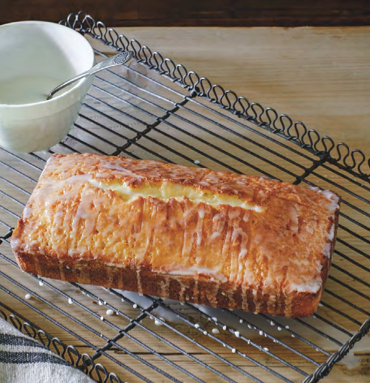
Lemon Drizzle Cake
Warne’s Model Cookery and Housekeeping Book, published in 1868 in both London and New York, contains one of the earliest recipes for lemon cake, which calls for just four ingredients: eggs, flour, sugar and grated lemon peel. A staple of tearooms in National Trust properties and regularly voted among the top ten favourite cakes in Britain, this deliciously sticky, moist version is slightly more elaborate yet just as traditional.
115 g (½ cup) unsalted butter, at room temperature, plus extra for the tin
185 g (1½ cups) self-raising flour, plus extra for the tin
1 teaspoon baking powder
½ teaspoon salt
150 g (¾ cup) caster sugar
1 tablespoon grated lemon zest
3 eggs
120 ml (½ cup) milk
1 teaspoon vanilla extract
Syrup:
3 tablespoons fresh lemon juice
3 tablespoons caster sugar
Glaze:
60 g (½ cup) icing sugar
1 tablespoon lemon juice
To make the cake, preheat the oven to 190°C/375°F/Gas Mark 5.
Butter a 2 lb loaf tin, then dust with flour, tapping out the excess. Sift together the flour, baking powder and salt into a bowl. In a large bowl, using an electric mixer, beat together the butter, caster sugar and lemon zest on medium-high speed until fluffy and lighter in
colour, about 3 minutes. Add the eggs, one at a time, beating well after each addition. Add the milk and vanilla and beat until blended. On low speed, add the flour mixture and beat just until blended. Transfer the mixture to the prepared tin and smooth the surface.
Bake the cake until golden brown and a skewer inserted into the centre comes out clean, about 55 minutes. Leave the cake to cool in the tin on a wire rack for a few minutes, then turn it out onto the rack. Turn the cake on its side to cool while you make the syrup.
To make the syrup, in a small saucepan over medium heat, combine the lemon juice and caster sugar. Bring to a simmer, stirring to dissolve the sugar, and then simmer until syrupy, about 2 minutes. Remove from the heat. Using a long wooden skewer, pierce the sides and the bottom of the warm cake, making the holes about 2.5 cm (1 inch) apart and 2.5 cm (1 inch) deep. Brush the sides and bottom of the cake generously with the syrup, making sure it seeps into the holes.
To make the glaze, in a small bowl, mix together the icing sugar and lemon juice until smooth. When the cake is cool, turn it right side up on a serving plate and drizzle the glaze over the top. Leave to stand until the glaze is set, about 15 minutes, and serve.
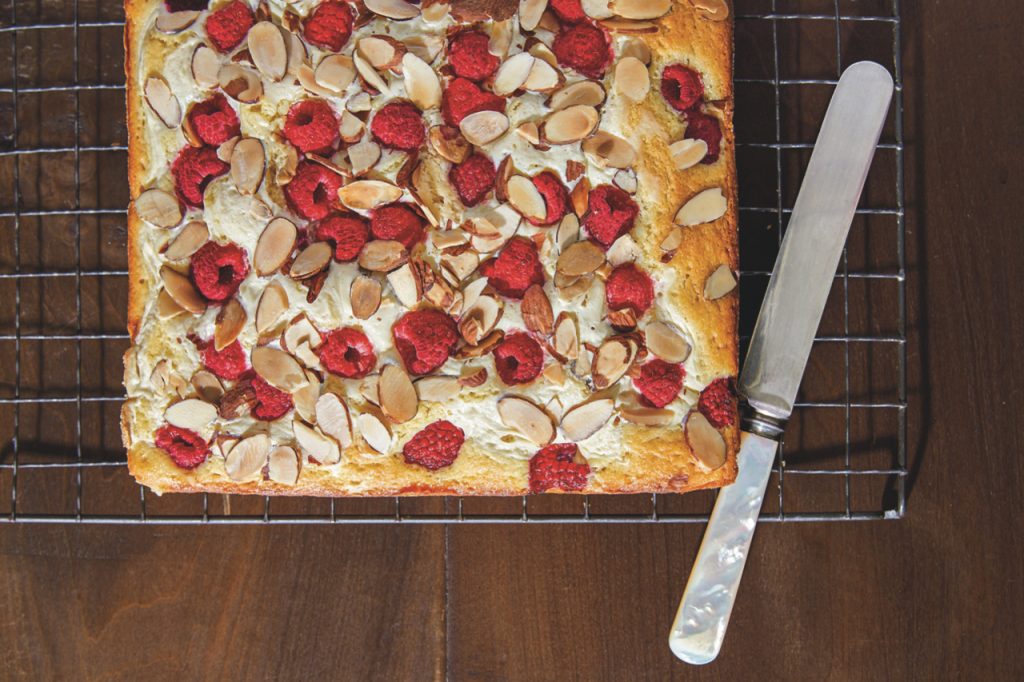
Raspberry Custard Cake
Bursting with the flavour of fresh raspberries and vanilla custard, this simple one layer cake boasts a moist and tender texture. It is perfect at teatime, of course, but it is also welcome as a dessert after lunch or dinner.
Serves 8-12
For the Custard
3 egg yolks
3 tablespoons caster sugar
Pinch of salt
180 ml (3/4 cup) whole milk
60 ml (1/4 cup) double cream
1 teaspoon vanilla extract or vanilla paste
For the Cake
170 g (3/4 cup) unsalted butter, at room temperature, plus extra for the tin
220 g (13/4 cups) self-raising flour, plus extra for the tin
11/2 teaspoons baking powder
1/2 teaspoon salt
200 g (1 cup) caster sugar
3 eggs, at room temperature
11/2 teaspoons vanilla extract
170 g (11/2 cups) raspberries
2 tablespoons flaked almonds, toasted
Icing sugar, for dusting
To make the custard, in a saucepan, whisk together the egg yolks, caster sugar and salt until blended and lighter in colour, about 1 minute.
Pour in the milk and cream and whisk until blended, about 30 seconds. Place over a medium-low heat and cook, stirring constantly, until the mixture is thick enough to coat the back of a spoon and hold a line drawn through it, 4–5 minutes. (It should register 77°C/170°F on an instant-read thermometer.)
Remove from the heat, add the vanilla and whisk until blended. Scrape into a small bowl and leave to cool until room temperature, then cover and refrigerate until cold, 2–3 hours or up to 2 days. For faster cooling, set the bowl over a larger bowl filled with ice and water and stir until cold. You should have 310 g (11/4 cups).
To make the cake, preheat the oven to 180°C/350°F/Gas Mark 4.
Lightly butter the bottom and sides of a 25-cm (10-inch) square cake tin or a 25-cm (10-inch) round springform tin, then dust with flour, tapping out the excess.
Have the cold custard ready. In a small bowl, mix together the flour, baking powder and salt. In a large bowl, using an electric mixer, beat the butter on a medium speed until smooth, about 1 minute.
Increase the speed to medium-high, add the sugar and beat until fluffy and lighter in colour, 2–3 minutes. Add the eggs, one at a time, beating well after each addition and adding the vanilla with the final egg. On a low speed, add half the flour mixture and mix just until blended, then add half of the custard and mix just until blended. Add the remaining flour mixture and again mix just until blended.
Transfer the mixture to the prepared tin, spread evenly, and smooth the top. Scatter the berries over the mixture, drizzle the remaining custard on top and finish with the flaked almonds.
Bake the cake until a skewer inserted into the centre comes out clean, 43–45 minutes. Leave to cool in the tin on a wire rack for at least 20 minutes.
Serve warm.
The Seasoned Gastronome
Twickenham & Richmond Tribune

